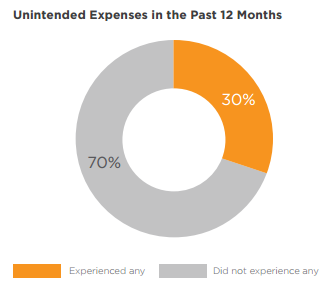 Many organizations simply do not have the resources to hire full time compliance officers, or buy and implement governance, risk and compliance software suites. However, they do usually have training programs to ensure employees understand how to be compliant with industry and or government regulations. With the advent of hosted, open learning and talent management systems, executives in mid-sized companies can tackle compliance training and get the benefit of aligning individual employee performance with corporate strategy – producing a serious competitive advantage. In, Turning Compliance into a Competitive Advantage Part 1, we begin by introducing the complications of compliance and provide a brief overview of how online training can make compliance less of a burden.
Many organizations simply do not have the resources to hire full time compliance officers, or buy and implement governance, risk and compliance software suites. However, they do usually have training programs to ensure employees understand how to be compliant with industry and or government regulations. With the advent of hosted, open learning and talent management systems, executives in mid-sized companies can tackle compliance training and get the benefit of aligning individual employee performance with corporate strategy – producing a serious competitive advantage. In, Turning Compliance into a Competitive Advantage Part 1, we begin by introducing the complications of compliance and provide a brief overview of how online training can make compliance less of a burden.
THE INCREASING COMPLIANCE BURDEN
Executive leaders view compliance as a prime risk and they are taking it very seriously. While organizations have always faced regulatory oversight and standards, current compliance environments in almost every industry are increasingly more onerous, more complex and continuously shifting. It seems ironic, but the very systems we put in place to make workplaces safer and less prone to error, have become the biggest source of corporate risk. The stakes have climbed too, with accrediting bodies and enforcement agencies becoming more aggressive and penalties increasing.
In highly regulated industries like finance, insurance, healthcare and oil and gas, many larger companies hire a dedicated compliance executive and a team that works to ensure requirements are met. Sophisticated governance, risk and compliance software helps them assess and mitigate risk.
 In small and mid-size organizations, C-level executives struggle to interpret regulations and turn them into business practices that meet requirements. And, there’s a growing disconnect between business leaders’ confidence in their ability to manage regulatory compliance compared to the reality of keeping pace with evolving requirements. For example, according to a recent ADP Research Institute survey, 30% of midsized companies surveyed reported expenses, including fines, lawsuits or penalties, due to noncompliance with basic government workforce and payroll regulations alone.
In small and mid-size organizations, C-level executives struggle to interpret regulations and turn them into business practices that meet requirements. And, there’s a growing disconnect between business leaders’ confidence in their ability to manage regulatory compliance compared to the reality of keeping pace with evolving requirements. For example, according to a recent ADP Research Institute survey, 30% of midsized companies surveyed reported expenses, including fines, lawsuits or penalties, due to noncompliance with basic government workforce and payroll regulations alone.
These same firms were 80% sure they were able to meet requirements. Meeting quality, performance and compliance goals requires a clear understanding of regulatory requirements, a talent development program that teaches people how to be compliant and corporate strategic objectives that can take advantage of compliance requirements. While many larger companies have adopted systems that allow them to manage compliance, develop talent and align individual performance with organizational objectives, mid-sized organizations can now benefit from integrated learning and talent management systems too.

ONLINE TRAINING FOR COMPLIACE
For companies that have state, provincial or federal regulations such as PIPEDA in Canada, HIPPA in the US, FDA and OSHA, or that follow quality standards such as ISO 9000/14000, it is essential to streamline training procedures, and monitor training effectiveness vis-à-vis compliance. In the financial industry, regulations such as Dodd-Frank, the Volcker rule and Sarbanes-Oxley have created a need for specialized training so that employees can learn and apply best practices to streamline processes and meet regulatory demands.
Many companies have turned to online training for compliance. Distributed workforces and the rise of mobility and telecommuting, have made online learning an attractive alternate to costly face to-face sessions. In addition to cost reduction, online learning can improve course consistency, which for compliance training is very important. An online system can also track who has taken which courses toward certifications and provides a built-in audit trail.
To learn more about an online learning system that will help your organization with turning compliance into a competitive advantage, contact our experts and they will be glad to help with the first steps.





